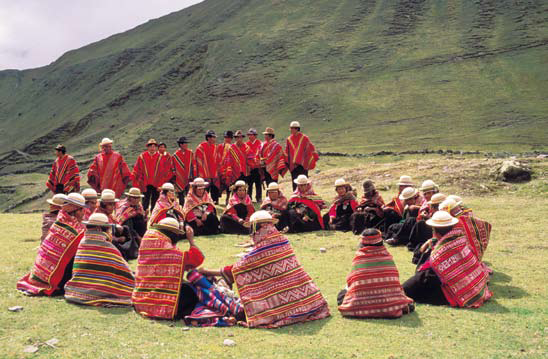Legislative Systems of Systems
The SoS approach views the autonomous legislative functions of legislative systems as independently managed organizations that must interact correctly so that the overall Legislative System of Systems can achieve its goals.
Legislative Systems of Systems can be catalogued as such because each of the functions are essentially autonomous, yet they must operate coherently -in a very specific manner- in regards to each one of the other functions. Adequate postal services make this interaction possible.
The constituent and legislative functions of Legislative System of Systems organization are the ones SoS engineering has found as not meeting SoS requirements. Also, SoS Engineering views legislative SoS as open systems that interact with the environment through each one of its primary components, constituents.
SoS Engineering, Productivity, and the Environment
Humans are very keen to environmental changes, and technical progress permits forecasts of the effects of human activities on the biosphere. Therefore, whenever legislative systems operate properly, constituents will prioritize environmental concerns -as they rely on the media for information regarding the effect of human activities on the environment.
The media helps constituents take into account resource limitation, and allow constituents to regulate growth and reformulate sustainable productivity expectations by taking into account the ultimate constraints posed by global environmental protection.
SoS Engineering for Unravelling Underdevelopment
The scenario that combines institutional disorder and low productivity -a situation that affects most countries in the world, has long been established as the common denominator for underdevelopment. The System-of- Systems approach to that scenario takes into account the scientific fact that the natural, and most probable, tendency for any process, system or organization is toward a situation where the most possible entropy exists, thus just as the natural tendency for productivity is to decrease, sustainability also decreases naturally. In other words, most humans are poor, and the environment is becoming degraded, because it is the natural and most probable tendency.

Image: Democratic Dialogue Handbook, CIDA, IDEA, OAS, UNDP
© Arabella Cecil, Panos Pictures
What is Teledemocracy?
|
Article 21-1 of the Universal Declaration of Human Rights:
"Everyone has the right to take part in the government of his country, directly or through freely chosen representatives."
United Nations General Assembly resolution 217 A (III), December 10, 1948
|
Teledemocracy can be described as the communication process that makes it possible for a Legislative System of Systems to be democratic, that is, to include the wishes and desires of all constituents. Teledemocratic activities have intrinsic value because they allow the legislative function of legislative SoS to approve yearly budgets that improve performance while reducing waste.
Teledemocracy deals with the value-adding constituent use of ICTs -the postal services and the Internet- to communicate with legislators from the comfort and convenience of their homes. But stimulating constituent requires incentives, that is, some sort of compensation for that value-adding task.
Best Constituent Practice calls for giving foreign aid priority to constituents who become motivated to produce a copy of a letter, or of an e-mail message, sent to his or her legislator, and perhaps even a reply. In the cases of populations that survive on less than one dollar a day, and nations in open crisis or with seething unrest, or down the road to international adversariness, payments should be used as kick-start motivators so that constituents start to write to their legislators regarding their situations.
The potential for the economic success of these countries helps catalogue payments to any of their proactive constituents as best practice, in comparison to practices like traditional multilateral aid, international economic sanctions, or military intervention.
Perhaps some research should be carried out in this area, but the alternative of not compensating constituents for carrying out their communication tasks may be tantamount to running a factory with an all-volunteer task or labor force. The factory may or may not function sporadically, and the results are sure to be less than stellar: the factory will probably never produce goods at the desired quantities or quality.
Comparing this hypothetical state of affairs to the situation in underdeveloped nations, where legislative SoS outputs in the form of public services are usually dismal, gives a logical underpinning to the argument that the international community should seek to have at least some foreign aid funds directed towards teledemocratic activities.
Low-Cost Process Reengineering in the North
Another BCP characteristic is its usefulness in the developed North. Even though citizens of developed nations tend to contact their legislators, the activity had not been classified as best practice. In the developed North, BCP has the capacity to empower excluded or underprivileged citizens and residents of depressed areas. Situations and opportunities abound: from US inner cities to French banlieues, or impoverished suburbs; and from forgotten towns in Siberia to disadvantaged aborigines in Australia. In all these cases, BCP can help make a big difference.
In developed nations much of the teledemocratic infrastructure is already in place. Thus, implementing BCP seems to be more a matter of focusing some public assistance funds towards rewarding excluded citizens for contacting their representatives in government. Once that step is taken, those citizens can transcend their technological constraint. They will begin to use their nation´s teledemocratic infrastructure to contact their representatives in government. The results will help bring about eco-friendly improved productivity, which is one of the goals of the OECD.
|